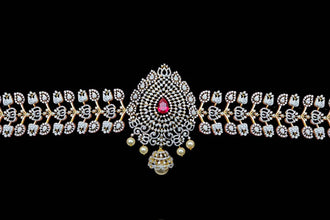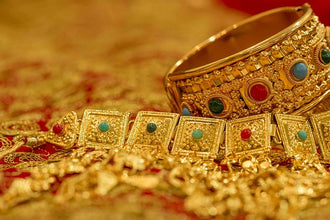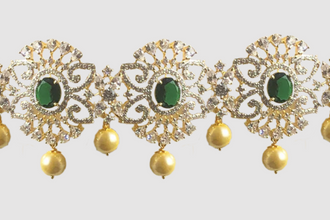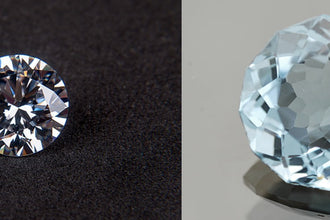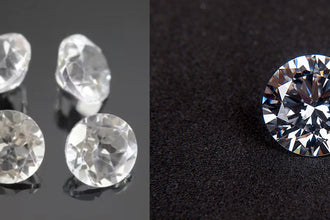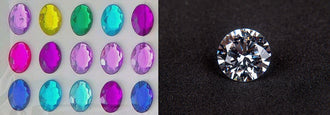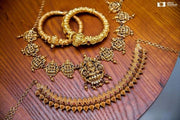
The traditional, rich, and distinctive jewelry styles and craftsmanship of South Indian jewelry distinguish it apart from the jewellery types found in other Indian states. South Indian jewellery is primarily gold, with diamonds, pearls, and kemp stones.
South Indians use jewellery as a status symbol, the abundance and display of which are attributed to one's social achievement. Jewelry is profoundly ingrained in every element of their culture, including tradition, religion, rituals, ceremonies, weddings, and festivals.
Let's discuss various types of south Indian jewellery worn :
NECKLACES OR HAARAMS
- LAKSHMI HAAR: A Lakshmi Haar is a long gold necklace with a jewel-encrusted pendant that features a delicately engraved image of the goddess Lakshmi surrounded by peacocks or elephants and set with valuable stones as its focal point. The goddess stands for money and success. It is a crucial component of the bridal jewelry set and is worn during festivities and festivals. When created with gold coins, Lakshmi Haar is known as Lakshmi Kasu Mala. While a luxury Lakshmi Haar produced with 22k gold and gems can cost as much as Rs. 1,50,000 lakh and more, a gold-plated Lakshmi Haar starts at roughly Rs. 1500.
- MANGO MALA: A Mango Mala or Manga Malai is a distinctive southern object that can be light or hefty, heavily decorated. They look fantastic on any traditional garment, including Kanjeevaram sarees. The necklace's chain is made up of mango-shaped pendants, most of which are set with cabochon rubies and pearls, and it has a complex pendant in the middle. This is typically worn during weddings and other significant events. The mango represents love. Mango Malas can cost up to Rs 3,000,00 due to their beautiful carving, especially if Nakshi. Impersonations cost Rs 2000 and above.
- KASU MALA: A traditional decoration known as Kasu Mala, or "Gold Coin Necklace," is made of tiny gold coins engraved with the Lakshmi symbol and strung together in an overlapping pattern. Kasu Mala, which women must wear on their wedding day, is available in various lengths, from short pieces for more casual events to extravagant long ones for formal clothing. Older generation women typically wear smaller Kasu Mala as jewellery. The necklace represents prosperity and good fortune. Real gold Kasu Malas start at Rs. 15,000; imitation ones start at Rs. 600.
- The Nakshi or the Temple Jewellery : The Chola dynasty's control in the ninth century is regarded to have marked the beginning of temple jewellery. Since the Chola kings promoted cultural development, many pieces of temple jewellery are now modeled in the designs of South Indian temples. Temple jewellery is embellished with pearls, gems, and precious and semi-precious stones to give them a classic appeal. They are also adorned with stones like polki and Kundan, which are popular in North Indian jewellery. Among the designs and motifs available are swans, peacocks, lotus flowers, gods and goddesses, royal figures, and other themes. The Nakshi, or temple jewellery, enhances a bride's beauty and radiance. It gives you a stunning appearance on your wedding day.
- The Pacchi Jewellery Necklace: The Pacchi is among the items of South Indian jewellery that have been meticulously crafted. Along with pearls, it is decorated with glass stones and Pacchi leaves. Pacchi's three-dimensionally created pieces are his best.
The lovely and varied selection of south Indian neck jewels will make you alluring, whether you're seeking jewellery for the engagement, Mehndi, or the ultimate wedding appearance. Everything you ought to know is right here.
With our guide to South Indian necklaces, we hope you can select a lovely style for yourself.


